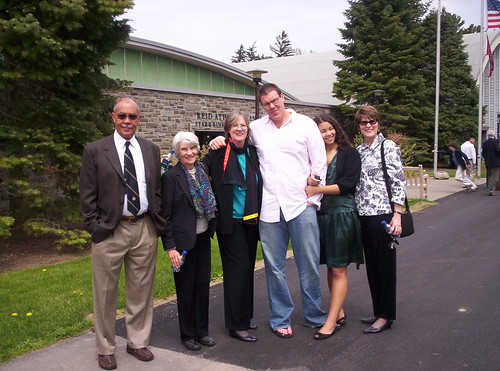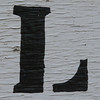I read about a public library in Maryland (Howard County Library) that has moved to an Ubuntu Linux based application (known as Groovix) for its public access computers.
Excerpts from the article:
"After I saw the Groovix deployment, with RealPlayer and other media support, there was no turning back. We begin piloting in January and it went effortlessly." De Groff tested the operating system on her existing hardware, upgrading the RAM from 128MB to 512MB. "The bulk of them are Dell GX150s with some GX100s," she says. "The newest machines are four years old." De Groff also added GCompris, a GPLed educational software package for children that includes more than 80 games."
Also, words of advice on learning what your patrons are actually doing on the computers as opposed to what the library staff thinks they are doing:
"We talked to our staff and they said the customers were searching the catalog. But when we talked to the customers, they said, 'We're reading email and doing online banking.' And then when we tracked hits, 70% of them were to MySpace. They may also be banking and need a secure system, but the audio and video are obviously very important as well. Your feedback from the staff isn't always consistent with the data you're going to generate -– so put it all together and meet all those needs
Friday, July 20, 2007
Wednesday, July 11, 2007
Yelp reviews libraries
This was a surprise to me- I thought the Yelpers were just into food. Anyway, I checked out the Yelp reviews for the Berkeley Public Library, and discovered that everybody loved it- along with some interesting comments.
Here's one excerpt:
"the berkeley library has the goods! the earnest nerdy librarians, a solid fiction room, dvds, cds, even a respectable foreign language books section. they can get you pretty much any book you want, though you may have to wait for it to arrive via some special magic lending source, and new books can be awfully hard to see on the shelf. i plug away looking for the new books to no avail until i just forget that i ever wanted to read them and settle on whatever vapid fiction is sitting on the shelf"
OK- I'll get past the "earnest nerdy librarians" crack and get down to the great suggestion- how to spotlight new books, or good books, or any book recommendations at all. My North Berkeley branch has a shelf of librarian recommendations (which I always check) but it is usually empty because people have taken the books out- this is prime marketing space and should NEVER be allowed to be empty- if the recommended book gets checked out- put another in its place. People LOVE recommendations.
Here's one excerpt:
"the berkeley library has the goods! the earnest nerdy librarians, a solid fiction room, dvds, cds, even a respectable foreign language books section. they can get you pretty much any book you want, though you may have to wait for it to arrive via some special magic lending source, and new books can be awfully hard to see on the shelf. i plug away looking for the new books to no avail until i just forget that i ever wanted to read them and settle on whatever vapid fiction is sitting on the shelf"
OK- I'll get past the "earnest nerdy librarians" crack and get down to the great suggestion- how to spotlight new books, or good books, or any book recommendations at all. My North Berkeley branch has a shelf of librarian recommendations (which I always check) but it is usually empty because people have taken the books out- this is prime marketing space and should NEVER be allowed to be empty- if the recommended book gets checked out- put another in its place. People LOVE recommendations.
Ann Arbor District Library catalog
The AADL has a great catalog, which we are reviewing as part of this week's exercise in the eBranch course. Among the many interactive features, it has reviews by patrons,tags and comments as well as many ways to browse the catalog. The tags feature is very well done- it first presents a page of the top 500 tags, then, in a sidebar, lists the top 10 tags, the 10 most recent tags, 10 random tags and 10 reviews. Each one is a link to the tagged items which then link back to the catalog. According to our instructor, AADL has modified an Innovative Interfaces catalog to include these features. It would be great to hear how they did it.
Also interesting is that the top 10 tags were dominated by manga related terms: fantasy, anime, manga, shonen jump, shonen, time travel, ghosts, half-demon, demons. It would appear that the most avid taggers are the anime fans- suggestive of the demographic likely to use this type of interactive feature.
A fun little feature is a card catalog image to which you can add comments instantly. I added the note, "This is neat", not really expecting it to post, but it did. In looking at the source code, it appears to be some kind of php script interacting with a form, but I couldn't quite figure it out. It's a neat trick though could be hard to deal with the graffiti.
Another interesting feature of the catalog is the options that are listed along with the bibliographic information on the book. The options are: Request this book, Card Catalog Image, Look inside this book @ Google books, Table of Contents, Summary/Annotations (these last two apparently through Syndetic Solutions).
Also interesting is that the top 10 tags were dominated by manga related terms: fantasy, anime, manga, shonen jump, shonen, time travel, ghosts, half-demon, demons. It would appear that the most avid taggers are the anime fans- suggestive of the demographic likely to use this type of interactive feature.
A fun little feature is a card catalog image to which you can add comments instantly. I added the note, "This is neat", not really expecting it to post, but it did. In looking at the source code, it appears to be some kind of php script interacting with a form, but I couldn't quite figure it out. It's a neat trick though could be hard to deal with the graffiti.
Another interesting feature of the catalog is the options that are listed along with the bibliographic information on the book. The options are: Request this book, Card Catalog Image, Look inside this book @ Google books, Table of Contents, Summary/Annotations (these last two apparently through Syndetic Solutions).
Monday, July 9, 2007
Flickr and podcasting in libraries
Flickr is a must for libraries- I liked the Hennepin Library's "Bookspace" series, in which patrons submitted photos of themselves reading books. It's fun to look at pictures, and people who attend library events will feel more a part of the library if they see themselves on the libray website- in fact, they'll probably tell their friends and relatives to take a look, too. I really liked Westmont Public Library's idea of showing the new books, with the option to link directly back to the library catalog - I have to figure out how that's done- something involving objects I guess. Knowing how simple Flickr makes things, it's probably not too difficult. Also want to explore the Swan Online Catalog they are apparently using.
Podcasting is a bit harder- all the downloading and whatnot probably deters alot of novice users. The explanations are kind of wordy- all the sites needed clearer, simpler explanations, but Denver did a nice job. Their page is so friendly looking that it inspires trust in the user.
Podcasting is a bit harder- all the downloading and whatnot probably deters alot of novice users. The explanations are kind of wordy- all the sites needed clearer, simpler explanations, but Denver did a nice job. Their page is so friendly looking that it inspires trust in the user.
Juice and podcasts
Last week's exercise on multimedia content on library websites led to all sorts of dabbling, including figuring out how to email photos from a cameraphone to Flickr, how to post photos from Flickr to my blog (here's a link to Flickr's page telling you how to do this- all very simple, which is why Flickr is so popular) and how to set up a podcast receiver. I installed Juice but have not figured out how it works- the only MP3 player I have at the moment is my daughter's beloved iPod and she would be devastated if anything happened to it. Since disaster is frequently one click away in the world of internet explorations, I think I'll wait until I get one of my own. I think this is something like a feed aggregator, that automatically collects new podcsts from rss feeds that you specify and works with a reader like iTunes.
Storytelling podcasts
I have reviewed the Denver Public Library's site before, but found something new on this latest visit (the definition of a good website- something new each time you visit): a link to multimedia stories, available for free through a vendor, August House. I listened to and watched a charming story called The Drum. Interactive features include an option to read the story, with a button to click if you want a narrator to read along with you. The spoken text is highlighted in short phrases as the words are spoken, quite effective for developing word recognition. Another selection is called "Music Fun" and you click on the drums you want to hear, and two players on a stage do the drumming while small animals dance to the beat (the smiling alligator is really cute!)You can print out a coloring book, mazes and some "what's wrong with this picture?" pages. Under the Family Fun tab are instructions for baking the bread from the story and making a drum from an oatmeal container. Story Cove is sponsored by August House Publishers and describes its services this way:
"Story Cove folktales come from a variety of cultures and places. They share timeless values and simple, universal lessons.
The Story Cove format enables children and their families to explore these stories in a variety of ways. As a result, each child is able to develop a more personal understanding of a story while also exercising and developing a range of intelligences. This allows each child to discover and develop his own interest in the stories."
"Story Cove folktales come from a variety of cultures and places. They share timeless values and simple, universal lessons.
The Story Cove format enables children and their families to explore these stories in a variety of ways. As a result, each child is able to develop a more personal understanding of a story while also exercising and developing a range of intelligences. This allows each child to discover and develop his own interest in the stories."
Labels:
Denver Public Library,
podcasts,
Story Cove,
storytelling
Sunday, July 8, 2007
Friday, July 6, 2007
check it out
Recipients of a SirsiDynix Building Better Communities Awards:
(among others, but these two I want to check out)
• Lincoln Trail Libraries System – The library’s “PolyTalk” program is an innovative service to help Illinois libraries of all types reach out to people with limited English language skills.
SUNLINK: Florida Department of Education – SUNLINK uses a variety of technologies to improve access to information to Florida K-12 students, parents, administrators and library media specialists. To learn even more about the Building Better Communities Awards recipients, visit www.sirsidynix.com/awards.
(among others, but these two I want to check out)
• Lincoln Trail Libraries System – The library’s “PolyTalk” program is an innovative service to help Illinois libraries of all types reach out to people with limited English language skills.
SUNLINK: Florida Department of Education – SUNLINK uses a variety of technologies to improve access to information to Florida K-12 students, parents, administrators and library media specialists. To learn even more about the Building Better Communities Awards recipients, visit www.sirsidynix.com/awards.
More on Second Life and Libraries
When I was logged into Second Life this afternoon, the statistics were something like 7 million subscribers, 1 million active and 40,000 currently logged in. As I was aimlessly teleporting around, I noticed that many of the others were speaking German (not sure where I was- one place was the Carribean Jazz Club or some such name, with an avatar wailing “How do I stop dancing?”) so maybe I just stumbled upon particularly Germanic haunts, but, back to my original point, I do wonder how large a library constituency is actually inhabiting SL on a regular basis. More to the point may be its potential as an interactive space, useful for instructional purposes, and informational exchange. I am trying to get to the SJSU SLIS site to see what they are doing. Will report back when I manage to figure out how to get there.
From the Talis blogCybrary City, an extension of library services in Second Life:
It is intended that Cybrary City will fulfil two main purposes, both somewhat different to the services already delivered by existing Second Life Library properties. Firstly, Cybrary City will offer services for librarians including a librarians' library and training facilities suitable for teaching the delivery of Second Life services and for offering physically distributed groups an opportunity to come together to share their ideas and experiences. With Second Life already reaching a demographic with which many real world libraries report difficulty in engaging, and with techniques and practices tested here in Second Life liable to prove highly aposite as we seek to virtually deliver services from libraries in a growing number of online environments, this is surely to be broadly welcomed.
Secondly, Cybrary City will offer individual real world libraries a space of their own in Second Life within which they can offer information about themselves and their services. They might also wish to staff those spaces in order to offer their patrons a different mode of engagement.
From the Talis blogCybrary City, an extension of library services in Second Life:
It is intended that Cybrary City will fulfil two main purposes, both somewhat different to the services already delivered by existing Second Life Library properties. Firstly, Cybrary City will offer services for librarians including a librarians' library and training facilities suitable for teaching the delivery of Second Life services and for offering physically distributed groups an opportunity to come together to share their ideas and experiences. With Second Life already reaching a demographic with which many real world libraries report difficulty in engaging, and with techniques and practices tested here in Second Life liable to prove highly aposite as we seek to virtually deliver services from libraries in a growing number of online environments, this is surely to be broadly welcomed.
Secondly, Cybrary City will offer individual real world libraries a space of their own in Second Life within which they can offer information about themselves and their services. They might also wish to staff those spaces in order to offer their patrons a different mode of engagement.
IM, My Space and Second Life
As an exercise for the "Building a Successful eBranch" class, we were instructed to review some library sites in these venues, and create some accounts. Here are some of my observations:
IM services (Princeton University, Santa CLara University and the St. Charles Public Library)
All three of these libraries did a nice job of presenting the IM reference services and linking to the IM providers. I particularly liked SCU’s Ask a Librarian page- nicely laid out and clear. Downloading the MSN messenger was a bit strenuous – more personal info than I like to divulge, and a blatant attempt to upsell their other services. I have to add a few buddies before I can evaluate. I am particularly interested in the live video messaging- could be a good reference format.
My Space pages (Denver Public Library, University of Texas Libraries and the Thomas Ford Memorial Library):
I understand and appreciate the need to meet the patrons where they are, but not sure how effective this is- it may be perceived as an adult intrusion, or an attempt to be cool. The Denver site was the best- lots of content and it looks like it’s current and has participation. The UT site also has friends, although not that much content that I could see. The Thomas Ford page looked lonesome, and sounded a bit plaintive- only 8 friends (that’s more than I have, but still…) When your last entry is “Hey does anybody ever check this thing anymore?”, it might be time for a new tactic.
Second Life:
Second Life is hard work. I created an avatar some months ago- Dewdrop Raymaker- and went back recently to wander around. In my absence, a newer version was released and required a reinstallation of the application. After two tries, the new version was downloaded and installed (hopefully uninstalling the old version in the process) and I was finally able to log in. Not that I know what to do once I’m there. The learning curve is steep, not at all intuitive for the novice player.
IM services (Princeton University, Santa CLara University and the St. Charles Public Library)
All three of these libraries did a nice job of presenting the IM reference services and linking to the IM providers. I particularly liked SCU’s Ask a Librarian page- nicely laid out and clear. Downloading the MSN messenger was a bit strenuous – more personal info than I like to divulge, and a blatant attempt to upsell their other services. I have to add a few buddies before I can evaluate. I am particularly interested in the live video messaging- could be a good reference format.
My Space pages (Denver Public Library, University of Texas Libraries and the Thomas Ford Memorial Library):
I understand and appreciate the need to meet the patrons where they are, but not sure how effective this is- it may be perceived as an adult intrusion, or an attempt to be cool. The Denver site was the best- lots of content and it looks like it’s current and has participation. The UT site also has friends, although not that much content that I could see. The Thomas Ford page looked lonesome, and sounded a bit plaintive- only 8 friends (that’s more than I have, but still…) When your last entry is “Hey does anybody ever check this thing anymore?”, it might be time for a new tactic.
Second Life:
Second Life is hard work. I created an avatar some months ago- Dewdrop Raymaker- and went back recently to wander around. In my absence, a newer version was released and required a reinstallation of the application. After two tries, the new version was downloaded and installed (hopefully uninstalling the old version in the process) and I was finally able to log in. Not that I know what to do once I’m there. The learning curve is steep, not at all intuitive for the novice player.
Subscribe to:
Posts (Atom)







